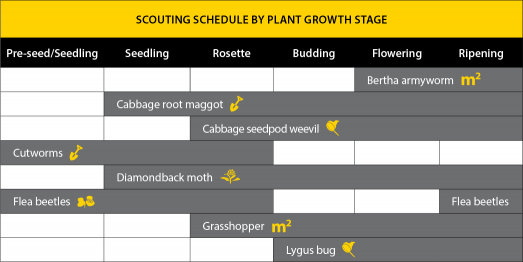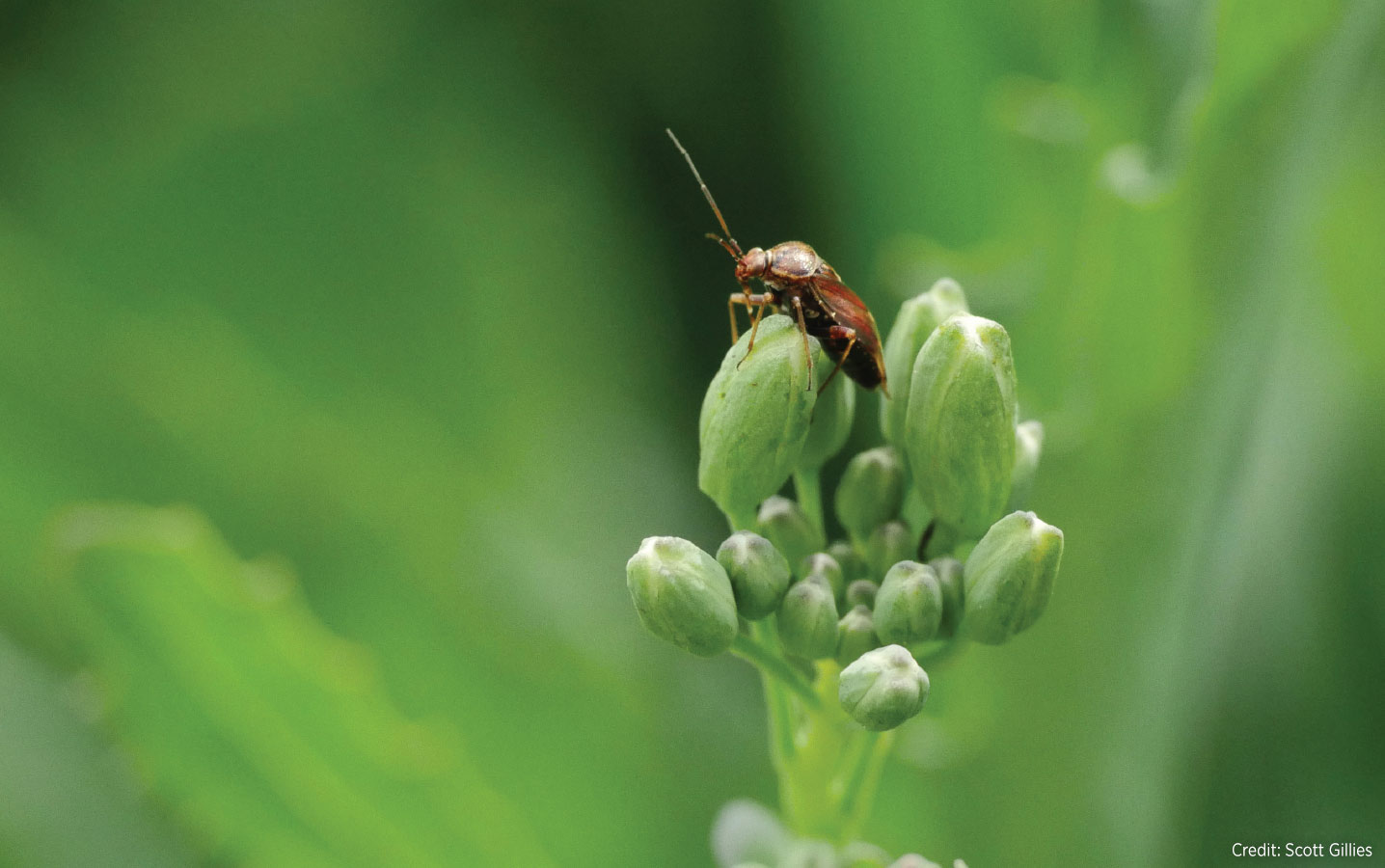Insect thresholds drive profitable pest decisions
They vary from insect to insect, and they help canola growers decide if an insecticide application is necessary or not. What are they? Insect thresholds.
These economic thresholds are an important consideration every growing season. For farmers and agronomists, it’s worth knowing where they came from and how they might change over time.
The “Holy Grail” of insect thresholds for canola and other oilseeds is the Western Committee on Crop Pests Guide to Integrated Control of Insect Pests of Crops. You can find it online at westernforum.org under “Control Guidelines”. The guide is reviewed and updated annually. Manitoba Agriculture entomologist John Gavloski provided the 2017 update.
Find all previous Science Editions online at canoladigest.ca
and more on research discoveries at canolaresearch.ca
“The basic research behind a number of insects and their impact on the plant has stayed the same over time,” Gavloski says. Hybrid varieties yield much higher now than varieties did decades ago, seeding rates have changed over time and the number of canola fields across the Prairies
has grown dramatically, but the insects are still feeding
the same way.
Economic or nominal
Whenever discussing insect thresholds, Gavloski cautions that the type of threshold must be clearly distinguished: nominal or economic. Many of the thresholds used are nominal thresholds, which are based on experience rather than research to quantify the impact of the insects on crops.
Examples of nominal thresholds are those for diamondback moth (DBM) and flea beetles. The current nominal threshold for DBM is around 20-30 larvae per square foot in plants with flowers and buds, but Gavloski suggests that research could make this threshold more precise and should be more crop-stage specific in order to make it more robust.
Lygus has a research-derived economic threshold: when flowering is complete, canola fields can experience yield loss of 0.1235 bu./ac. for each lygus bug per 10 sweeps. New research is seeing if this yield loss per lygus should be lowered for good growing conditions, which means growers and agronomists may want to check for threshold updates
each year.
Examples of economic research-based thresholds are those for bertha armyworm (BAW) and lygus. True economic thresholds will vary with costs, so simply revising production costs will update the values.
An economic threshold doesn’t mean all spray decisions will be straight-forward, though. For example, BAW has an economic threshold, but since their cycles are driven by weather (cold temperatures combined with little snow-cover can kill overwintering pupae) and natural enemies (predators, parasitoids and pathogens), their populations are influenced by more than just access to food and crop stage.
Another complication to consider is the multiple species of some pests, such as flea beetles which now have populations of crucifer, striped and hop species.
Farmer perspective
Katelyn Duncan, who farms with her sister, brother and dad near Regina, Saskatchewan, says they consider crop potential when making insect spray decisions.
“In addition to the damage that can be caused, we factor in yield potential,” Duncan says. “If the field has higher yield potential, then we want to protect that and we’ll be more likely to spray. We always look at the economics.”
Fortunately, the industry is becoming much more familiar with thresholds and how to use them to make better decisions. Insect identification and threshold materials are available in print form and online from the provincial agriculture departments, life science companies, local retails and various organizations, including the CCC.
“Working with a qualified and trusted agronomist is important but isn’t a complete replacement for scouting on your own farm,” says Duncan, “especially when we see spray planes out on neighbouring canola fields. Then we definitely want to double-check the sample numbers and threshold values to make sure we’re making the right decision.”

Insect monitoring
Provincial governments, with help from CCC agronomy specialists, conduct annual insect surveys to provide a fairly comprehensive picture of insect populations in each region. The Prairie Pest Monitoring Network shares weekly updates on population predictions and relevant information (such as the wind trajectories that could be bringing up DBM populations) and the Alberta Insect Pest Monitoring Network has survey results, forecasts and real-time maps for specific pest insects.
Growers and agronomists can also get timely advice at canolawatch.org, and meet the experts at workshops and meetings such as the provincial crop diagnostic schools and the canoLAB and canolaPALOOZA events that the CCC puts on with Alberta Canola, SaskCanola and Manitoba Canola Growers.
Social media also makes the sharing of information and diagnosis of insect issues quicker and easier than ever, although users should always consider the source.
“A farmer can ask a question on Twitter and very quickly get an answer or be referred to a credible resource with the answer,” Duncan explained. “It’s pretty handy and incredible valuable for farmers to have a network of trusted sources at their finger tips.”
Insect research continues
Research into insect monitoring and to update or create economic thresholds remains necessary. Hector Carcamo, research scientist at AAFC Lethbridge, is part of a team currently working to validate or redefine the 25 per cent damage threshold for flea beetles and to update those for lygus bugs in canola. This will be a great asset to canola farmers (especially with suspicions that current lygus economic thresholds are too low).
The pest-reducing impact from beneficial insects is also being researched. Although quantifying the effect that beneficial insects have on insect pest populations is very challenging, it would add value to thresholds once completed.
The bottom line with all of these thresholds is to help farmers realize that some insect feeding is acceptable, and that only when numbers or levels of damage reach a certain point will the time and cost to spray provide a payback.





